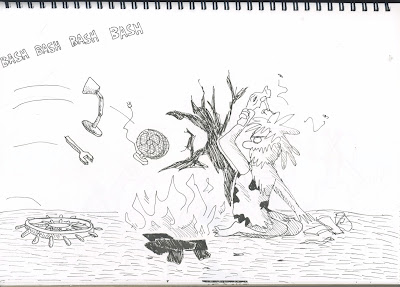This week was really useful because we got to critique and be critiqued on our storyboards from last week.
Here's some of the feedback that I received:
 |
| A very common criticism was that I didn't use many camera angles |
 |
| To be fair, of the eighteen storyboard frames sixteen of them were only mid shots, so maybe a little diversity wouldn't have gone amiss. |
 |
| I liked that it was visually pleasing. I tried to design the characters to look not too creepy. |
 |
| This comment offered up a new perspective on my lack of diversity in shots, which was nice. This person liked the simplicity and stylistic choice. |
Overall, my positive feedback was mostly stuff like:
- It was lighthearted and humorous
- It was aesthetically pleasing and clearly laid out
- The story flowed well.
And my negative feedback was mostly stuff like:
- I could've used a wider variety of shots
- The shading is a little lacking
Some people said that they liked the detail while others said it wasn't detailed enough, but I guess you can't please everyone.
I understand what people mean when they suggest using a wide variety of shots to make it dynamic. I still defend my choice to use mostly mid shots because I couldn't see any need to add long shots or extreme close ups, which are used to isolate characters or intensify an emotional moment. In terms of keeping the storyboard looking dynamic, I'd prefer to do that by making the characters move in exaggerated and interesting ways and to make them compelling to watch rather than by adding frivolous camera angles.
 |
| The way the fiddlers move in unison, for instance |
I agree that I should've added more shading to make the characters more indistinguishable from the backgrounds. I added a bit of shading before we displayed the storyboards, but it was more of an afterthought and I didn't really consider it enough.
Critiquing the work of others was a useful experience. Firstly, it forced me to think about the animation on another level and analyse in terms of what good shot framing looks like, and when it looks good to have the camera pan in to a scene or not. It was handy to consider these important details as I can apply it to my own practice.
Secondly, it was good to see other people's work so I can secretly see whether I'm better than them or not. I'm going to have to crush my classmates in the industry later anyway so it's good to know who'll be a threat to my media empire in the future.
(Only joking)
(Sort of)























